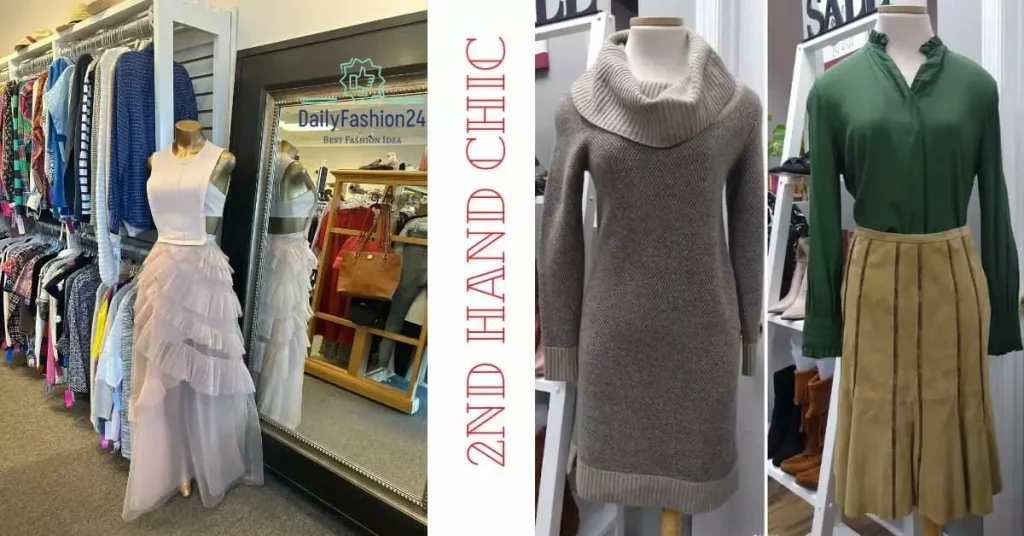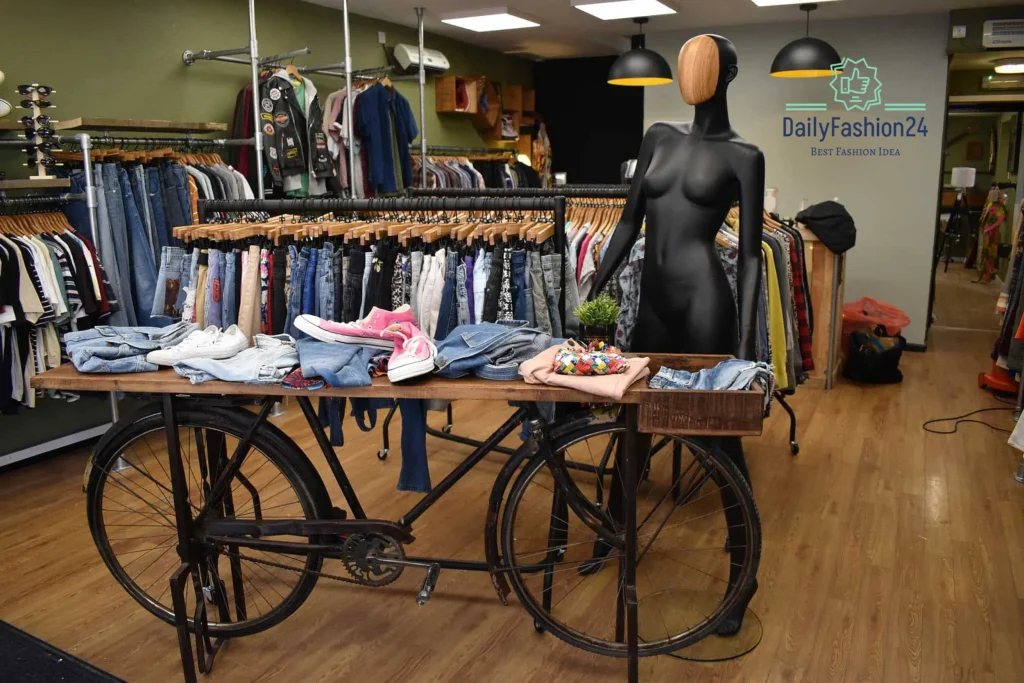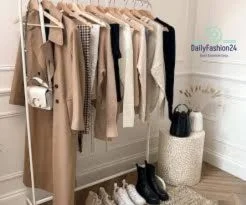Secondhand chic has emerged as a forceful trend combining style, affordability, and environmental consciousness in an increasingly sustainability-focused world. This movement is all about making second-hand clothes not only acceptable but desirable. It is no longer a matter of necessity rather than choice when wearing pre-owned clothes. Nowadays it means expressing your character creatively and showing commitment to the environment.

What is Secondhand Chic?
Secondhand chic refers to wearing stylish outfits made from second-hand or vintage clothes. These are specifically selected items that can be bought from second-hand shops, vintage stores or online stores so that they fit in with the latest trends while remaining unique. The term “second hand” means that these outfits are not randomly put together but chosen for their style, quality, and uniqueness.
This trend is part of a bigger sustainable fashion movement. Many people are realizing how fast fashion impacts the environment and human rights thus turning to secondhand shopping as an alternative practice to reduce their impact on earth. Instead of adding to the chain of production and waste management, second-hand chic gives consumers trendy options that they can choose instead of buying new items.
The Appeal of Secondhand Chic
Sustainability:
One of the major drivers behind secondhand chic is sustainability (Ministry for Environment). The fashion industry remains one of the biggest polluters globally due to its contribution to water pollution, waste, and carbon emissions (Ministry for Environment). Considering this aspect, people who wear used clothing instead help them slow down the demand for new products therefore lowering environmental effects originating from such processes.
However, purchasing used garments also prolongs their lifespan by diverting them from landfills hence minimizing exploitation of natural resources (Sung Joo Kim; Cho Hichang; Lin; Evans et al.). It also contributes towards practicing a circular economy where products are reused repurposed or recycled instead of thrown away after use.

Affordability:
Secondhand chic is also appealing because it’s often much more affordable than buying new. You can find high-quality, designer pieces that would typically be far beyond your reach at a fraction of the price in second-hand stores. This allows fashion lovers to build a stylish wardrobe without breaking the bank.
Moreover, the affordability of secondhand clothing makes it accessible to a wider range of people. It democratizes fashion and this means that men and women with different budgets can all work on their style.
Uniqueness:
Secondhand chic provides an alternative amidst fast fashion where trends change so quickly and everybody seems to wear the same thing. Vintage or pre-owned clothes are mostly one-off things or produced in small quantities thus you are likely not to come across someone wearing a similar outfit as yours.
This uniqueness promotes self-expression (Keller; Jordan). Fashion tells stories about ourselves, while through secondhand chic we tell these stories using garments that have aged well and have character (Davide; Hashim Mohamed et al.). Instead of just finding clothes that fit you well, choose items with which you relate the most and include them in your closet in such a way that they reflect your personality

How to Get the Look of Secondhand Chic
It’s all about being selective and artistic when it comes to achieving a secondhand chic look. This article provides some tips on how to get started:
Know Where to Shop
The ability to find great secondhand clothes begins with understanding where you should go. Thrift stores, vintage shops, and online marketplaces such as eBay, Poshmark, or Depop are just a few good places to start. Since they have their selection process, it is worth exploring different options to find the best items.
Do not hesitate – sometimes the greatest pieces are hidden deep inside racks or at the bottom of piles. Patience while buying second-hand clothes is essential since it may take time before finding that perfect piece.
Mix and Match:
A combination of new and old stuff can create a fascinating second-hand chic effect. For example, pair modern jeans with a classic blouse or match thrifted jacket with a fashionable dress. The result is something contemporary yet timeless.
Feel free to try out various combinations. Through this aspect of fashion creativity as well as individual expression is allowed in secondhand chic. Play around with textures, designs, or colors so that your look stands out from others.
Pay Attention to Quality:
When you are shopping for used items, quality matters most. Always look for well-made clothing that has been looked after properly over its lifespan. Materials like cotton, woolen fabric, or silk make better choices because they last longer, and also garments that have finally stitched lines along buttonholes and zippers are durable.
Moreover, sewing skills can come in handy because one might fix a damaged cloth or alter it so that fits perfectly on them A good purchase may become even more valuable after a little tailoring work.
Think Outside the Box:
One thing about shopping for second-hand goods is finding something unexpected. Do not focus on one style from one era; be open-minded enough to try something new. You may realize that an outfit from your least expected decade is the one you like most.
Furthermore, accessories can be used to display secondhand chic on new clothes. Vintage scarves, belts, purses, and jewelry are other accessories that make any outfit look outstanding and they can be found more easily than clothes.
Take Your Time:
Building a second-hand chic wardrobe does not happen overnight. Finding the right pieces and curating a collection of clothes that represents your style will take time. Therefore, be patient with it because it is part of the fun.
The Future of Secondhand Chic
The rise in popularity of secondhand chic fashion reflects a broader trend towards more sustainable and ethical practices within the industry. As consumers become increasingly aware of their choices’ effects, there will likely continue to be demand for second-hand clothing. In addition, this shift has been supported by growth in online platforms facilitating easier purchase and disposal of such items as well as leaders who have embraced circular fashion ideology like designers and brands.
More innovative features are expected in the future when it comes to the second-hand fashion market. It could entail upcycling or repurposing garments or even sharing or exchanging outfits in completely different ways altogether. Beyond being a mere fad; it becomes a step towards making tomorrow’s world more fashionable yet eco-friendly.
In conclusion:
Secondhand chic means more than just a way of dressing; it is about choosing how one lives their life to reflect values like sustainability, uniqueness, and inventiveness. Embracing secondhand clothing enables us to experience the thrill of hunting for a good deal, the feeling that comes with finding something nice, and the chance to own an item that reflects our character. The next time you feel like changing your wardrobe, think about finding a small local thrift shop or checking out some online listings. You never can tell what treasures you may find there.
